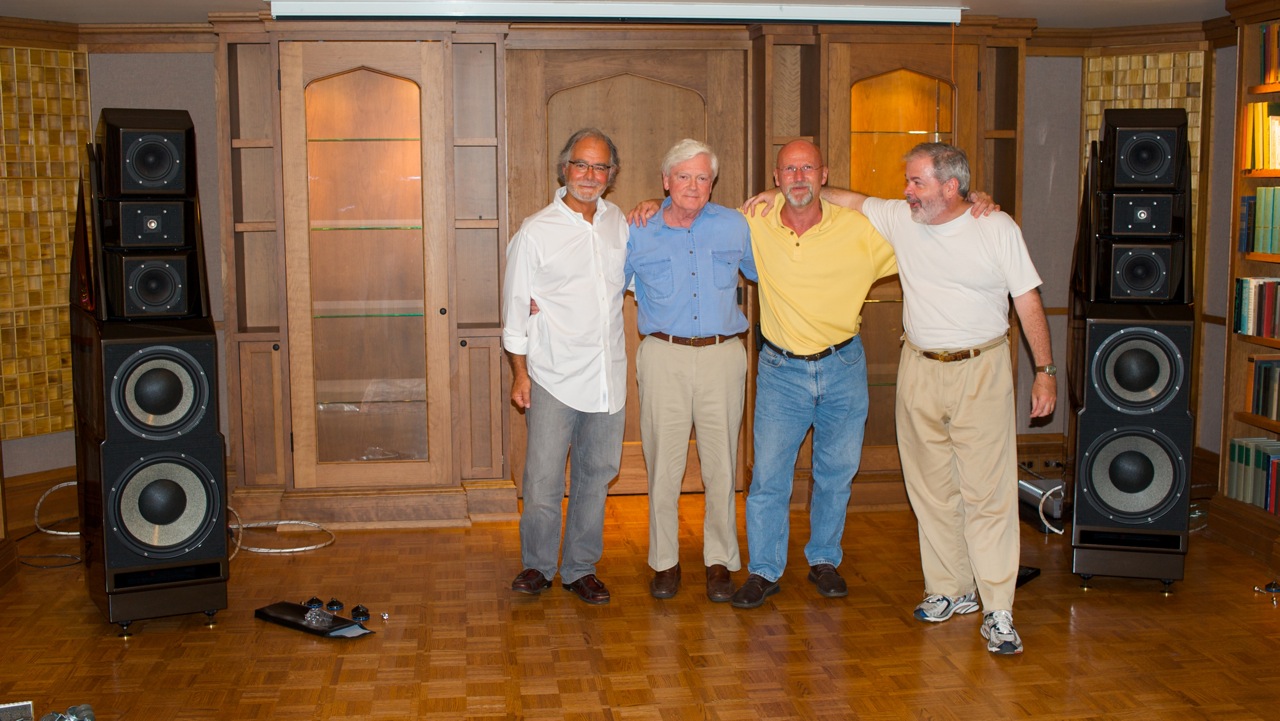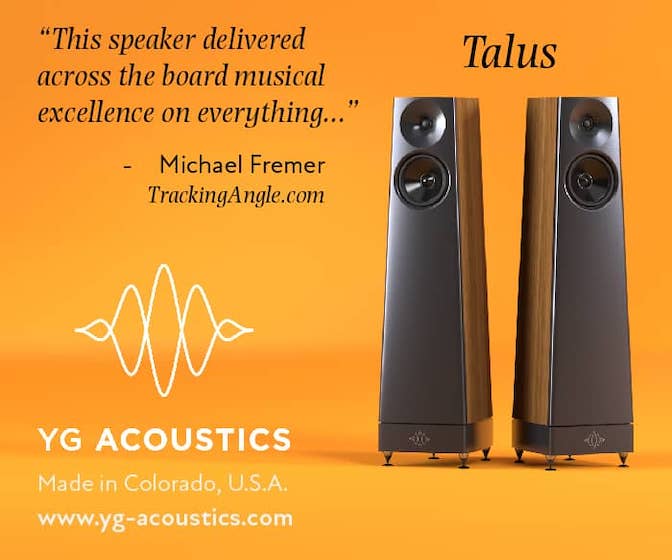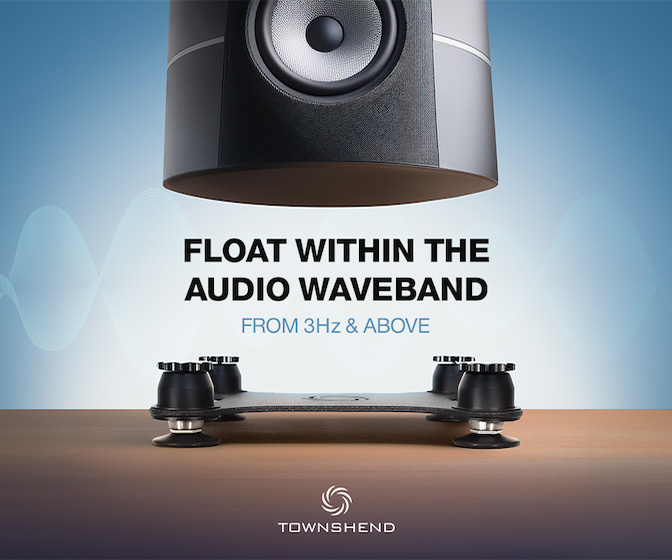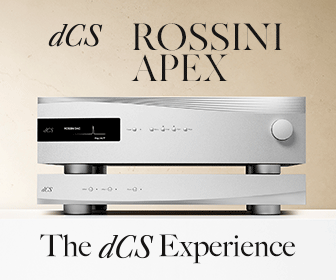Marking the Passing of an Exceptional Man: Thomas Andrew MacNab (“Tam”) Carlson (1941-2024)
(Tam Created the Ralston Listening Room at the University of the South)
Tam Carlson died at Vanderbilt Medical Center in Nashville this past Sunday. Chris, his devoted wife of 40 years, was by his side. Tam is survived by Chris, a daughter, and a granddaughter.
Himself a graduate of the University of the South (in Sewanee, Tennessee), Carlson later served with distinction as a Professor in the English Department. Tam’s scholarly interests included English and Irish poetry and literature, but his primary field of concentration was American literature, especially the literature of the American South.
Tam was also a music lover and an audiophile. What distinguished Tam from just about all other audiophiles is that Tam was not content just to enjoy a nice stereo system in the comfort of his own home. Tam’s passion was to share his passion for music. His mission was to conceptualize and raise funds for a state-of-the-art listening room to honor two of his own teachers, Fr. William Ralston and Charles Harrison, and to enable generations of students to have a life-changing encounter with great music.
I first met Tam and Chris at a Stereophile show. They approached me after I had participated in a panel discussion. They told me that they were working on a listening-room project, and that Charley Hansen of electronics manufacturer Ayre Acoustics had told them that they “must” speak with me. Well, wasn’t that nice of Charley.
We hit it off very well, and I signed on as a consultant. By that time, Tam had been fundraising for almost seven years, and construction was underway. Tam’s would-have-been loudspeaker preference was MBL’s omnidirectional loudspeakers. However, there were practical problems aplenty with that choice. Starting with, you don’t want to have to have a Hall Monitor near the loudspeakers every moment the Listening Room is in use, to prevent curious students from poking their fingers into the complex array of delicate metal leaves or laminations. (“Does the music really come out of there?”)
After a few discussions, I set about populating a table of more than a dozen potential loudspeaker choices. Complete with prices, specifications, and my totally subjective and idiosyncratic Pros and Cons. Upon learning that the Carlsons would be making a quick trip to New York City to attend the Metropolitan Opera, I got in touch with Peter McGrath of Wilson Audio Specialties.
I asked Peter to arrange with Wilson Audio’s NYC dealer for the Carlsons to have a VIP loudspeaker audition. The result was that Wilson Audio Alexandria IIs were the first loudspeakers installed in the Ralston Room.
I went down to Sewanee to help with setting up the loudspeakers and to participate in the acoustical fine-tuning of the room. In their multiple crates, the two modular Alexandria IIs had a total weight of more than a ton. I carefully opened up all the crates, and Peter and others helped me assemble the loudspeakers. The photo above, left to right, shows Peter, Tam, Chris Huston, and me.
Meeting Chris Huston was quite a treat. Chris Huston was John Lennon's best friend in Art College. Chris' band The Undertakers alternated sets with the Beatles at Liverpool's Cavern Club. Really! You can look it up. Chris’ bandmates turned down Brian Epstein’s offer to manage them. (Yes, that is right. Sigh.)
But, after the Beatles were on American television, the Undertakers decided to try their luck in America. Despite their not being burdened by things such as the proper kind of Visas, or work permits, Union memberships, NYC “Cabaret Cards,” or even networking contacts.
Obviously, that did not work out. His bandmates went back to the UK, but Chris had found a recording studio that allowed him to sleep on the couch in exchange for cleaning the place and making tea. Chris turned out to be a quick study in recording and production.
Therefore, when the studio had a potential client, a band that could not afford to pay the studio’s usual rates, the studio asked the band if they would like to have Chris produce and engineer, at a discounted rate. The result was The Young Rascals’ “Groovin’ (on a Sunday Afternoon).” Chris later was nominated for a Grammy for his work on Eric Bourdon and War’s The World Is a Ghetto. Among his other credits, Chris co-engineered Led Zeppelin II. Not shabby, that!
I think that my major contribution to the design of the Ralston Room was to persuade them to implement my favorite “Room Fix,” which is engineered architectural diffusion products. Even I was surprised at the improvement from placing diffusion panels under the ceiling soffit overhanging the listening-room side of the glass doors at the rear.
I must say that my job was made much easier because Peter McGrath and Chris Huston were such supportive colleagues. I was particularly glad that Peter was on-site when the painstaking process of adjusting the positions of the Alexandria IIs, in increments as small as half an inch, was underway. I scooted around on my hands and knees, sticking Post-It notes on the parquet floor.
When we finally had “first sound” out of the loudspeakers, Peter McGrath summoned up some Chicago electric blues. At the far end of the room I measured a very gratifying 95dB. Tam had assembled an all-star team, if I may say so myself. We knew that we were going to end up with an excellent listening room. But something that none of us had expected was in the offing. I assume it was some clever individual in the Admissions Office who added the Ralston Listening Room as a stop on the Campus Tour for prospective students and their parents.
I later heard that one prospective student, when asked if there was anything in particular he wanted to hear, said he would like to hear Eric Whitacre’s choral masterpiece “When David Heard.” When it was over, the young man turned to his parents with tears in his eyes and expressed the fervent wish that Sewanee would accept him. I think that that is so wonderful, and such a great validation of the work of all of us.
When I learned of Tam’s death, I asked Peter McGrath for a few words:
Tam was a very good man. High-quality audio was a deep passion
for Tam. He viewed it as the best way to share the joy of experiencing
great recorded music with everyone he could... young and old.
In closing, I ask that all of you watch and listen to the embedded YouTube of the Los Angeles Master Chorale, singing Morten Lauridsen’s choral setting of a brief (10 lines) poetic passage by James Agee, “Sure on This Shining Night.”
That poem (words below) is one of the most beloved fragments of the literary heritage of the American South. Please listen in memory of Tam and out of gratitude for his legacy.
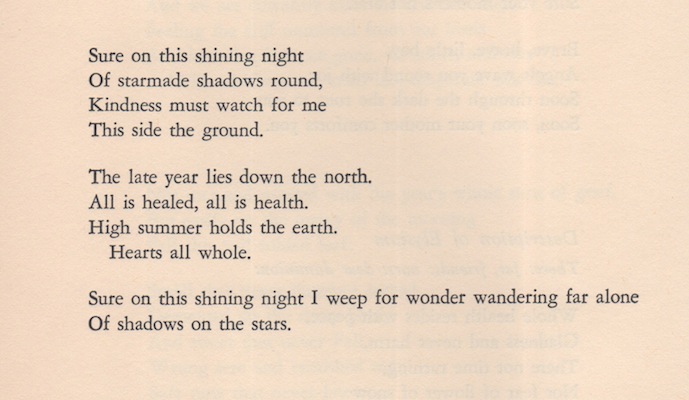 From Permit Me Voyage, © 1934 the Yale University Press,
From Permit Me Voyage, © 1934 the Yale University Press,
reproduced under Fair Use.
John Marks is a multidisciplinary generalist and a lifelong audio hobbyist. He was educated at Brown University and Vanderbilt Law School. He has worked as a music educator, recording engineer, classical-music record producer and label executive, and as a music and audio-equipment journalist. He was a columnist for The Absolute Sound, and also for Stereophile magazine. His consulting clients have included Steinway & Sons, the University of the South (Sewanee, TN), and Grace Design.
# # #


